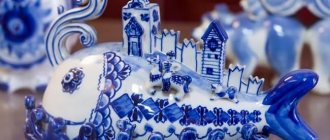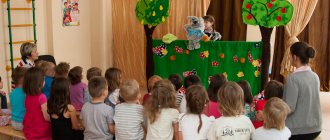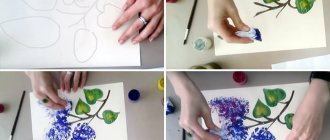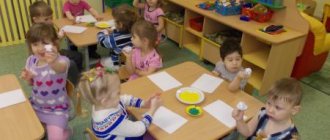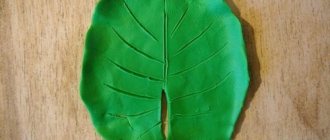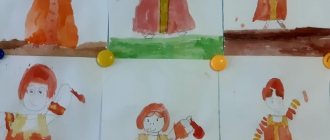November 29, 2016
Averyanova Sveta
A small child makes his first attempts to draw. He is interested in how to draw a squirrel with a pencil. You don't have to be an artist to help your child. There are special methods that allow you to quickly master the technique of depicting animals.
Using the step-by-step drawing method, you can easily depict any object on paper with a sufficient degree of similarity.
You can try to draw simple objects and animals (squirrel, fox, wolf, etc.) with a three-year-old child. Don't rush, don't criticize, and don't demand too much. If you criticize, your child may hate drawing.
Over time, if he is interested, the child himself will improve the technique of creating a drawing. With an older child, 5 or 6 years old, you can draw more complex drawings, for example, depict an animal on a tree. You can also start working with watercolors and gouache.
What do we need
For the lesson, prepare everything you need:
- sheets of white paper A 4;
- simple pencils;
- eraser;
- a set of colored pencils for coloring;
- templates of simple geometric shapes made of cardboard.
It is better to buy thick, slightly rough paper, since it will be difficult for a child to draw a squirrel on thin and smooth sheets. You can buy a soft pencil.
It’s also better to buy soft colored pencils; they color brighter, and you don’t need to press or wet them (some kids manage to put a pencil in their mouth before drawing so that it colors brighter).
Templates of geometric shapes (oval and others) are needed if the child does not yet know how to draw an oval, circle, square and triangle on his own.
The sizes of the figures must correspond to the details of the future squirrel drawing.
Summary of educational activities on drawing “Squirrel” in the senior group
Tatiana Krivonogova
Summary of educational activities on drawing “Squirrel” in the senior group
Program content:
1. To consolidate and expand children’s knowledge about protein (appearance, nutrition, behavioral characteristics to changes in the environment).
2. Develop the ability to draw a squirrel. Learn to convey in a drawing the distinctive features of a squirrel’s appearance.
3. Improve visual skills and abilities, develop artistic and creative abilities;
4. Learn to correctly position an image on a sheet of paper;
5. Develop accuracy and neatness when working. The ability to bring something started to completion. Foster a love of nature and respect for animals.
Materials: Sheets of paper 1/2 A 4, simple pencils, erasers, wax crayons, photo illustrations or pictures of a squirrel, poster “Wild Animals of the Forest”, presentation “Squirrel”.
Progress of educational activities:
1. Organizational moment. Conversation with children.
The teacher hangs up a poster “Wild Animals of the Forest.”
Conversation about wild animals with children (children name forest animals, look at illustrations).
The teacher asks a riddle:
I walk around in a fluffy fur coat,
I live in a dense forest.
In a hollow on an old oak tree
I'm gnawing nuts.
Children: Belka
Educator: Today we will learn to draw a squirrel. But first, I suggest you see how a squirrel lives in the forest (view the presentation).
The presentation is accompanied by a story from the teacher with questions for the children. (What is the character of a squirrel? (fast, nimble, dexterous, nimble, nimble, etc.) How does a squirrel move through the forest? Why are its hind legs longer than its front ones? Why does a squirrel have such a big tail? How does it help it in flight? What does a squirrel eat? (in summer, in winter? What is the squirrel’s body covered with? Is the squirrel’s fur always the same color? Why does its color change)
2. Drawing a squirrel with simple pencils. Showing the teacher the sequence of drawing a squirrel.
Educator: Where should we start working? Where is the squirrel located on a piece of paper? What shape is the body and ears?
Children begin to work on a sketch using simple pencils. The teacher controls the children's work.
After sketching the drawing in pencil, a physical education session is held:
The squirrel jumped and jumped. (Jumping in place)
By winter, the pantries were filled: (slopes)
Here are the nuts (turn)
Here is a mushroom, (turn)
For sons and daughters. (Steps in place)
Children's independent activity is decorating squirrels with wax crayons. Drawing a fir branch, nut, snow at the request of the children.
3. Bottom line. Compiling a story based on drawings, analyzing the work of comrades.
Children look at the drawings, tell what they liked, note the appearance and what kind of character the squirrel turned out to be.
Educator:
-Who did we draw today? (To Belko).
— What is the squirrel doing in the picture? (The squirrel sits on a spruce branch)
- Well done boys!
Exhibition of works.
How to depict
To understand how to draw a squirrel step by step for children, you need to think about why they should be interested in this? Maybe you saw a squirrel in the park on a walk, or you recently went to the zoo and fed the squirrel nuts.
Or maybe my mother read Pushkin’s “The Tale of Tsar Saltan.” The depicted squirrel should resemble the one the baby saw and be as close as possible to the real appearance of the squirrel (not a photograph, of course).
To make the drawing more or less realistic, show your child step by step how to draw a squirrel with a pencil step by step. You can draw on a sheet without templates, and give your child the shape template that he must trace with a pencil.
If the child does not want to draw pictures with templates, let him learn to draw straight lines of figures himself. Everything will not be so fast and easy, and not so beautiful, but it will be interesting! First we draw an oval. You can accompany the lesson with poetry:
We drew an oval, we didn’t know what would happen.
1. At the top there is a smaller oval - the head of an animal, of course!
Let's draw legs for the animal so it can jump on the grass,
2. We draw the tail as fluffy, like that of a fast squirrel.
Ears, eyes, nose, mouth - a squirrel came out, not a cat!
The finished drawing of a squirrel can be finalized using a simple pencil or colored with colored pencils, erasing the extra contours of the geometric shapes (circles, etc.) with which the image was drawn.
Here is a step-by-step drawing of a squirrel you should get at the end of the lesson.
If the baby is tired, do not insist that the drawn masterpiece be completed; you can return to finishing drawing the squirrel later or the next day.
Young children find it difficult to focus on anything for longer than ten minutes. Never conduct drawing classes in a bad mood.
Your child may think that it is the drawing that makes you feel bad. It is better to postpone the lesson until the child and you have a desire to engage in fine arts. Then the baby will work with pleasure, and it will be easier for him to draw.
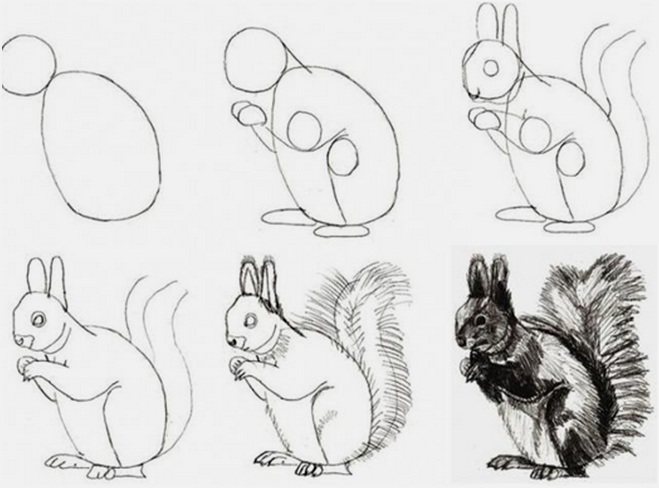
There are other, more complex ways to draw squirrel pictures for children, but it’s better to start with the simplest.
The simplest squirrel for children
If a novice artist wants to draw a squirrel, then he should use the simplest step-by-step technique. To do this you need to prepare:
- Simple pencil;
- Elastic band;
- Paper.
If everything is ready, then we proceed directly to drawing the animal:
- We start the drawing from the muzzle - draw a smooth line, add an ear in the form of a triangle and move on to the back.
- We draw the inside of the ear and nose, which is also depicted in the shape of a triangle. In the right place we place a slightly elongated eye with a pupil.
- We depict cheeks. To make the drawn line resemble fur, it must be drawn in a zigzag. Add a mouth between the top and bottom of the cheeks.
- Directly under the muzzle we draw the front legs, placing them one after the other.
We draw a zigzag line along the bottom of the paws. - We draw the squirrel’s hind legs, which should have a rounded shape at the top, and a flattened oval shape at the bottom. Create fur on the paws;
- We depict a fluffy tail using zigzags. It should start from the hind legs and go behind the back.
You can finish drawing the branch and move on to coloring. Younger children can only choose one color. And if a drawing lesson is held in an older group, then you can use several shades of orange.
On the topic: methodological developments, presentations and notes
Abstract of a creative lesson.
Strengthen the ability to tear off small pieces of cotton wool for additional design of your work. Strengthen the ability to use material economically and rationally. Develop the ability to notice weeks.
How to make a volumetric applique.
Formation of a positive attitude towards work and its results.
Leading educational area: cognitive Goal: Create conditions for consolidating ordinal counting up to 10. Objectives: Educational: Improve quantitative and ordinal skills.
This material is intended for older children. to form ideas about the non-traditional fine art technique of cut appliqué and skills in working with it.
Source
Draw a squirrel with a pencil
To draw a squirrel using only a simple pencil, you need:
- Prepare a base consisting of two equal circles, which should touch each other and resemble a tilted figure eight.
- From the point where the circles touch, draw a curved line (this will be the upper part of the thigh), and on the opposite side of the lower circle, draw a shorter line that will contact the tail.
- From the upper circle create a squirrel's muzzle and front legs with claws, add ears on top.
- Using a wavy line, form the curve of the back.
- Draw an eye, a nose and a slightly noticeable outline of the mouth on the head.
- Add a tail and remove unnecessary lines with an eraser.
All that remains is to “dress” the animal in fur, which is created using thick strokes. You can “give” a nut or other treat to the paws.
Preview:
Drawing lesson notes
in the middle group on the topic: “Squirrel” (using the poking method).
Goals: creating conditions for the realization of children’s individual creative abilities.
Objectives: 1. Teach children to depict an animal based on an ovoid (torso, head);
2. Learn to convey its characteristic features in a drawing: a lush large tail, gray color;
3. Teach children to observe basic proportions between body parts; convey a simple movement - a sitting squirrel holds a pine cone with its front paws.
4. Continue to teach children to hold the hand correctly, without straining the muscles or squeezing the fingers too tightly; achieve free movement of the hand and brush while drawing.
5. Continue teaching children to draw using the poking method.
6. Develop the ability to independently select the desired color.
7. Cultivate neatness.
Material: painting with a picture of a squirrel; two ovoids of different sizes; album sheets; gouache; hard brushes; water jars; oilcloths.
Preliminary work: observing a squirrel on a walk; looking at illustrations depicting squirrels in different poses; reading works about nature.
At the beginning of the lesson, children are seated in a semicircle. The teacher places in front of them an easel with a picture of a squirrel.
Educator: I knew one artist who loved to walk in the winter forest. And if I saw something interesting or beautiful there, I would draw it. The last time he saw a squirrel on a branch of a tall tree. She sat on her hind legs and held a bump with her front legs.
“The artist told me that in winter the squirrel hides in a hollow in a tall tree, and in severe frosts it covers itself with its large fluffy tail like a blanket. And when he gets hungry, he crawls out of his hollow and runs to the branches on which the pine cones hang. She plucks them from the branch and eats the seeds from them. This is the picture the artist painted when he returned from the forest.
The teacher places a picture of a squirrel in front of the children. When examining, he draws their attention to the pose of the animal, to the shape of the body parts, to their relative proportions, to the location of the body and head. Emphasizes that their oval shape is similar to a testicle (ovoid). The head is rounded on one side and slightly pointed on the other. Near the head, the squirrel's body is narrower than at the tail, and the head tapers at the muzzle. At the same time, he circles the body and head of the squirrel with his finger. Next, the teacher invites everyone to draw a squirrel together. But before we start, let's stretch our fingers. And let’s remember the warm-up about Squirrel.
(At the very beginning the fist is clenched)
Squirrel sits on a cart,
She sells nuts:
(Extend all fingers one by one, starting with the thumb)
— I suggest you paint the squirrel not with a simple brush, but with a hard one. First we will draw a spruce branch on which the squirrel will sit.
Afterwards, the teacher draws the outline of the body and quickly paints it with a hard brush (poke) and lifts it off the paper. Next he shows how to draw the head of a squirrel, and the rest of the parts - the tail, paws. When depicting a tail, you need to emphasize its length:
— The tail is long, fluffy, when it is raised, it reaches the squirrel’s head.
Children should pay attention to the different lengths of the hind and front legs:
— The squirrel’s hind legs are longer than its front legs, so it moves by jumping like a hare.
The rest of the details - ears, eyes - are depicted by the children themselves. After the teacher's demonstration, the children begin to draw a squirrel.
During the work, the teacher helps and asks the children:
— What color is the squirrel’s fur? (Children's answers.)
— This color is called gray, silver (if we are talking about animal fur) and other questions.
At the end of the lesson, the teacher displays children's drawings on a stand.
- How many squirrels have gathered here! They probably came running from all over the forest to enjoy the delicious pine cones together. Pointing now to one squirrel or another, he emphasizes successful images of individual parts:
— This squirrel has such a big and fluffy tail. It will not freeze in the most severe frosts. What other squirrel has a tail like that? (Children show.)
— This squirrel jumps well. Her hind legs are long. What other squirrels have long hind legs? (Children's answers), etc.
